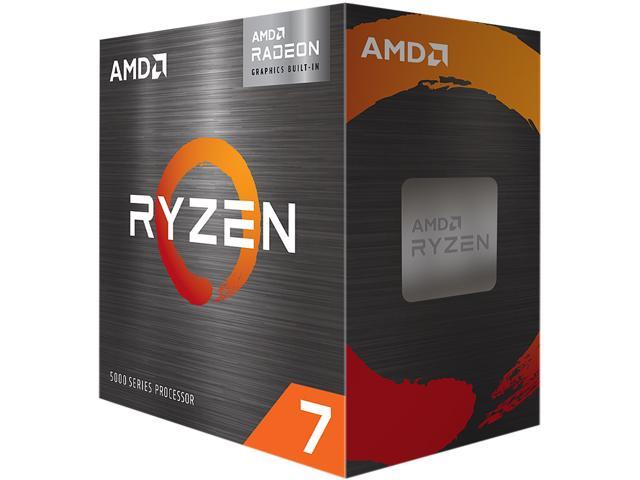
Introduction
The AMD Ryzen 7 5700G APU is a Zen 3 based CPU with AMD Radeon Graphics built-in. But how much faster is it really compared to the AMD Ryzen 7 3700X Zen 2 based CPU? Is the Zen 3 architecture enough for it to stand out compared to the Ryzen 7 3700X? Does it cut too many corners compared to a full-fledge AMD Ryzen 7 5800X Zen 3 CPU? In this comparison review today, we will look specifically at the CPU performance of the AMD Ryzen 7 5700G versus AMD Ryzen 7 3700X and AMD Ryzen 7 5800X.
If you are interested in the performance of the AMD Radeon Graphics built-in, which is based on AMD Radeon RX Vega 8, please read our Intel 12900K (UHD 770) iGPU vs AMD 5700G (Vega 8) APU Performance Benchmarks article. That review focuses on the Vega 8 performance inside the 5700G, today’s review is focused solely on the CPU performance of the 5700G.
AMD Ryzen 7 5700G Specs
The AMD Ryzen 7 5700G, codenamed Cezanne, technically launched on April 13th, 2021. However, it started its life out as an OEM-only option, that is until AMD finally made it available to purchase in retail later that year. A wise decision that should have come earlier. In the fall of 2021, the APU was available as a boxed processor for an MSRP of $359. The good thing is that according to PC Part Picker the 5700G is actually available for around $300 these days, which is a great price and much lower than MSRP.
The AMD Ryzen 7 5700G currently sits at the top of the SKU for APU models with Integrated Radeon Graphics on the desktop. This is the fastest version of these APUs this generation for the AM4 platform desktop PCs. The Ryzen 7 5700G is manufactured on TSMC 7nm FinFET.
The AMD Ryzen 7 5700G is based on AMD’s new lineup of AMD Ryzen 5000 G-Series Desktop Processors with Radeon Graphics. What makes the AMD Ryzen 5000 G-Series special is that these new APUs are based on the latest AMD Zen 3 architecture, which is an upgrade from the last generation Zen 2 APUs. The AMD Ryzen 4000 G-Series APUs were all based on Zen 2, and all of them were OEM only.
| Specification | Ryzen 7 5800X | Ryzen 7 5700G | Ryzen 7 3700X |
|---|---|---|---|
| Architecture | Zen 3 / Vermeer | Zen 3 / Cezanne | Zen 2 / Matisse |
| Process Node | TSMC 7nm FinFET | TSMC 7nm FinFET | TSMC 7nm FinFET |
| Cores/Threads | 8/16 | 8/16 | 8/16 |
| L2+L3 Cache | 4MB L2/32MB L3 | 4MB L2/16MB L3 | 4MB L2/32MB L3 |
| Base Frequency | 3.8GHz | 3.8GHz | 3.6GHz |
| Max Boost Frequency | 4.7GHz | 4.6GHz | 4.4GHz |
| TDP | 105W | 65W | 65W |
| Radeon Graphics | N/A | Vega 8 | N/A |
| MSRP | $449 | $359 | $329 |
What makes the AMD Ryzen 7 5700G stand out is that it is a full-fledge Ryzen 7 CPU with 8 core/16 thread. This matches the CPU cores/thread count on the Ryzen 7 3700X (Zen 2 CPU) and Ryzen 7 5800X (Zen 3 CPU). The max boost clock is 4.6GHz, which is only 100MHz slower than the AMD Ryzen 7 5800X’s boost clock of 4.7GHz. In comparison to the AMD Ryzen 7 3700X which runs at a boost clock of 4.4GHz the new Ryzen 7 5700G actually has a 200MHz higher boost clock at 4.6GHz compared to the Ryzen 7 3700X.
Another area where the Ryzen 7 5700G differs is in the L3 cache capacity. It has half the L3 cache of the AMD Ryzen 7 5800X and AMD Ryzen 7 3700X. The Ryzen 7 5700G has 16MB of L3 cache, while the 5800X and 3700X both have doubled at 32MB. This halving of the cache will make one of the biggest differences in performance.
Finally, the largest component to determining performance is going to be the TDP. The Ryzen 7 5700G has a TDP of 65W, making it a very low power chip for the desktop. The AMD Ryzen 7 5800X by comparison is a 105W default TDP chip, which is much higher. The Ryzen 7 3700X though is also a 65W chip, which matches the 5700G.
Another interesting fact is that the AMD Ryzen 7 5700G only supports up to PCIe 3.0, in fact all Ryzen 5000 G-Series APUs only support PCIe 3.0. They do not utilize the newer PCIe 4.0 bandwidth. This means that ultimately you will be restricted to PCIe 3.0 x4 SSD performance on motherboards, as well as PCIe 3.0 on the primary PCIe graphics slot rather than PCIe 4.0. This fact should not affect CPU performance, but it could affect other subsystem performance like SSDs, you won’t be able to get Gen4 SSD performance on your build with this APU, but Gen3 will still work great.
Therefore, the 5700G is an 8 core/16 thread CPU but has its L3 cache cut in half, a slightly lower clock speed than the 5800X, and a much lower 65W TDP and only PCIe 3.0 support. Compared to the 3700X it has a higher clock speed, and the biggest draw is that it is based on the newer Zen 3 architecture instead of Zen 2 like the 3700X.
Because this is an APU it has built-in integrated graphics in the way of AMD Radeon Graphics with Vega Graphics. It specifically uses an AMD Radeon RX Vega 8 GPU that is built-in. The graphics core is based on the GCN 5.0 architecture, Vega. It is made from 8 Compute Units, 512 Streaming Processors, 8 ROPs, and 32 Texture Mapping Units running at 2000MHz. We have a very detailed review of the performance of this APU in games in our Intel 12900K (UHD 770) iGPU vs AMD 5700G (Vega 8) APU Performance Benchmarks article.
AMD Ryzen 7 5700G Pictures
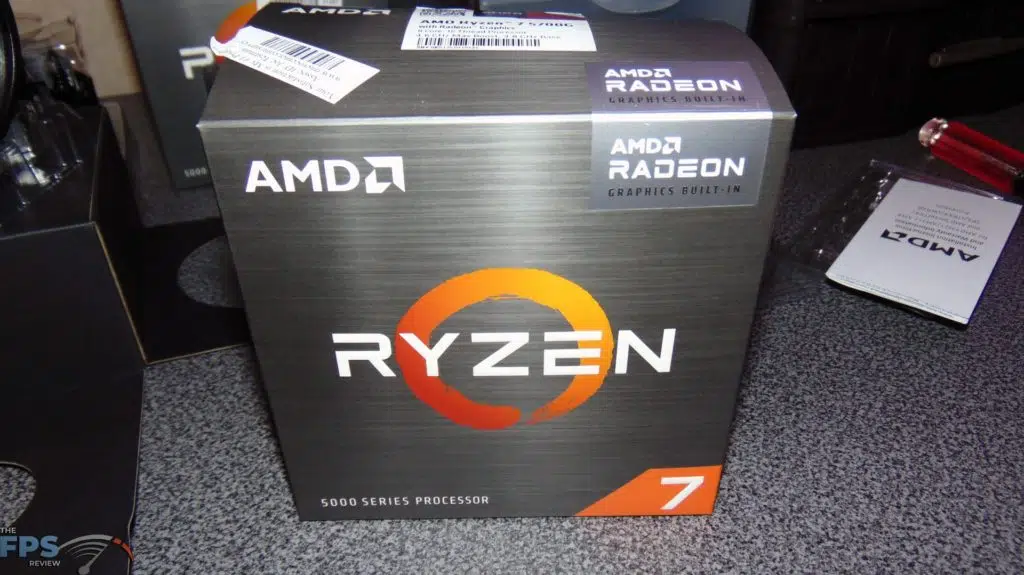
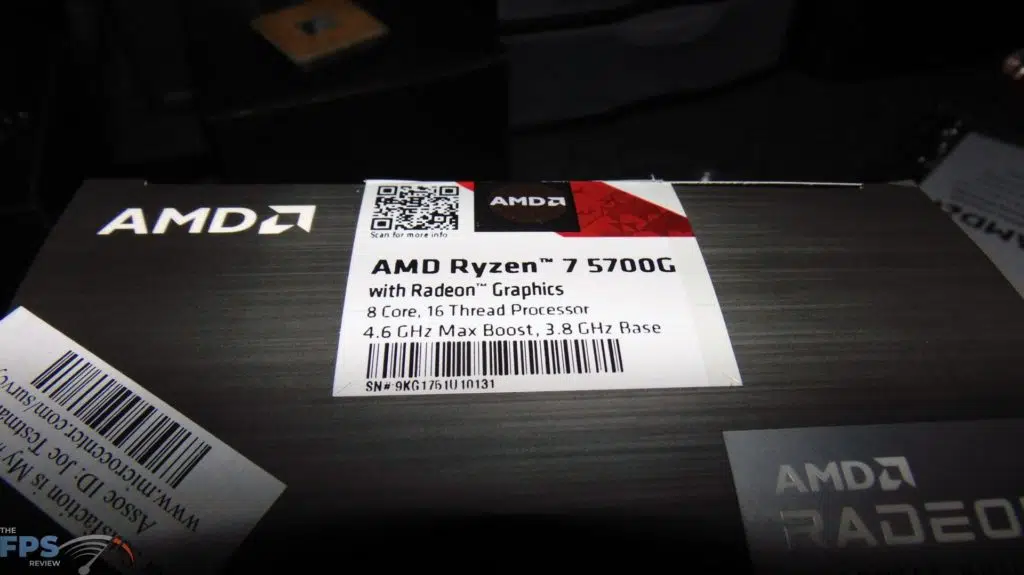
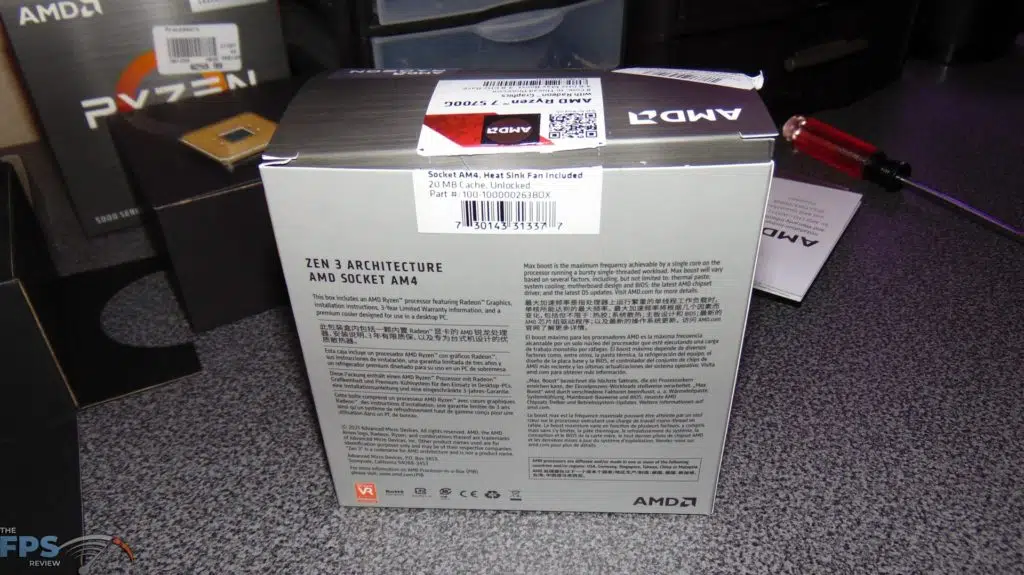
We purchased a full boxed retail Ryzen 7 5700G pictured above for review. The box comes in a nice color, and the label indicates it as AMD Ryzen 7 5700G with Radeon Graphics 8 Core, 16 Thread Processor 4.6GHz Max Boost, 3.8GHz Base. It is a Socket AM4, Heat Sink Fan Included, 20MB Cache (it’s counting the total of the L2 + L3 cache), and that it is Unlocked. Yes, you can overclock the 5700G.

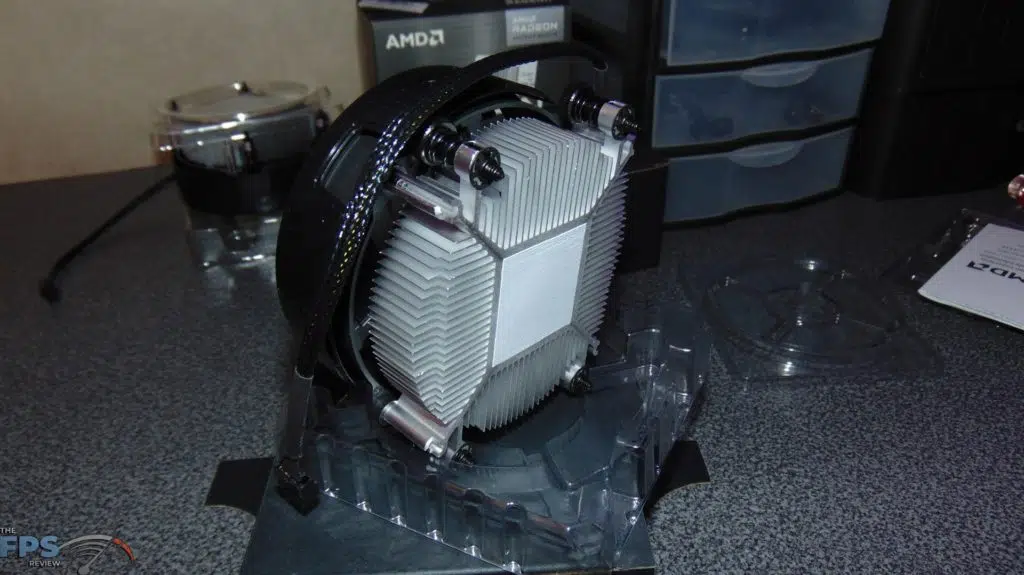

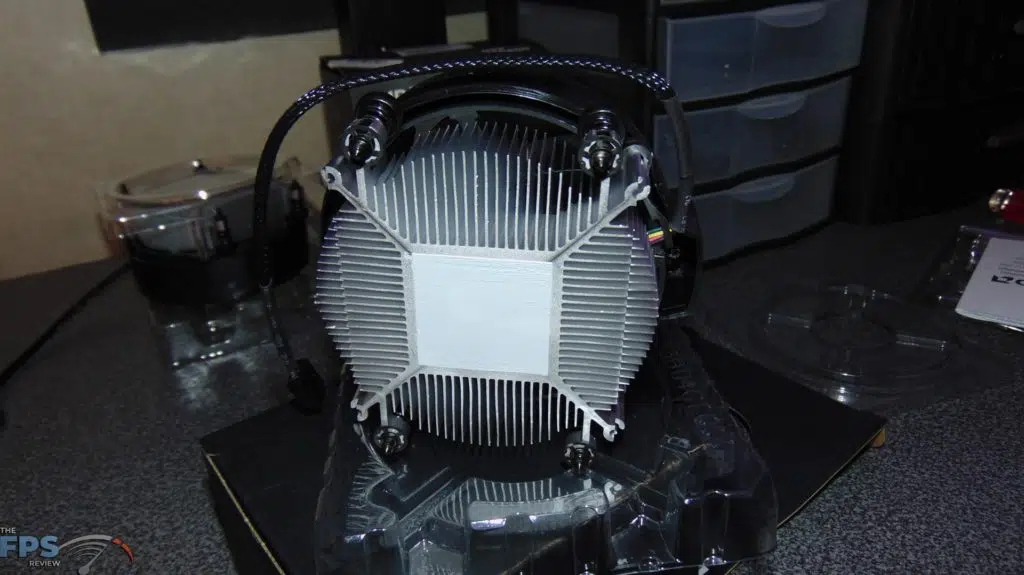
As is indicated on the package the boxed retail version comes with an AMD Wraith STEALTH heatsink fan in the box. The Wraith STEALTH is the most basic of the AMD processor cooling solutions that AMD offers. While it will get the job done, it is built for 65W TDP CPUs, has less meat on the bone in terms of heat dissipation area, and is all aluminum with no copper. It comes with pre-applied thermal paste and uses the AMD push-pin installation mounting.
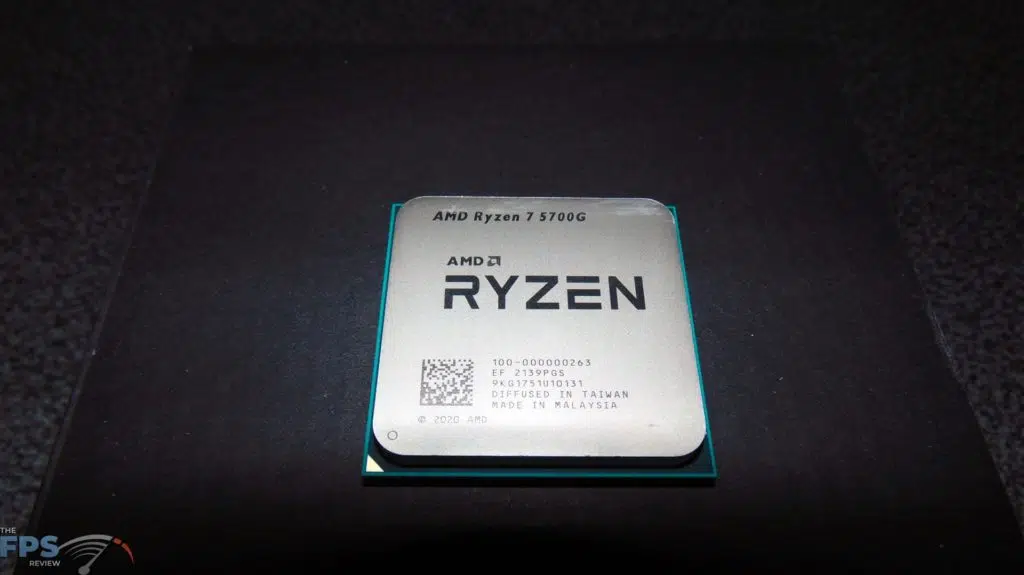
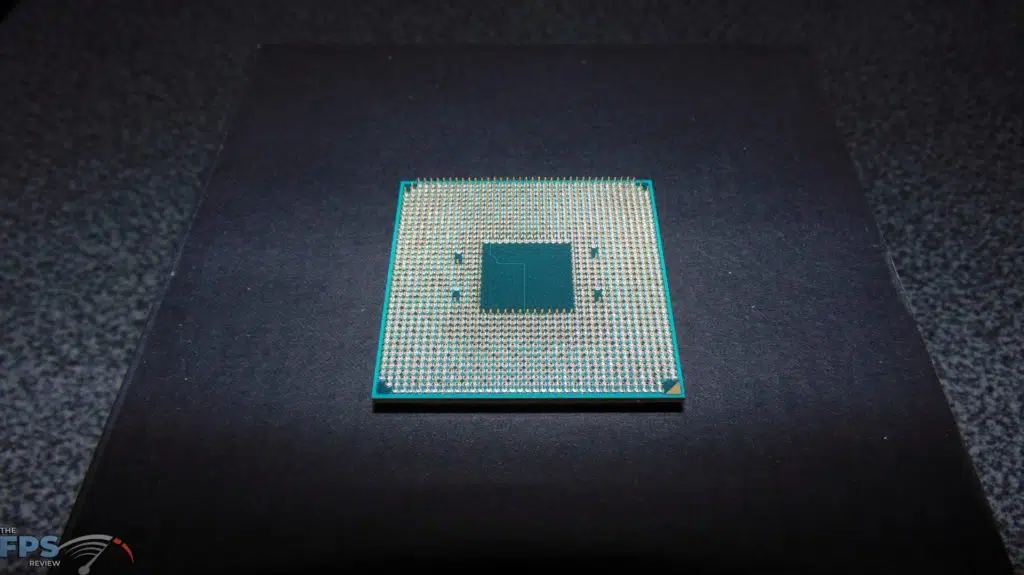
The AMD Ryzen 7 5700G itself looks like any other AM4 CPU. It is big and square, has a large heat spreader, and simply installs into our X570 motherboard with ease.
AMD Ryzen 7 5700G Installation
Installing our AMD Ryzen 7 5700G went smoothly, with no issues. We are using the MSI MEG CORELIQUID S360 AIO Cooler that we reviewed. We will be using this same AIO for all CPUs in this review. The motherboard we are using is an ASUS TUF GAMING X570-PLUS (WI-FI) motherboard. The BIOS we are using is the official Version 4022 build from 12/14/2021. We have a Crucial Ballistix DDR4-3600 CL16 16GB RAM Kit installed. From ASUS’s webpage for this motherboard, we are using Chipset drivers Version 3.10.22.706 dated 11/18/2021.


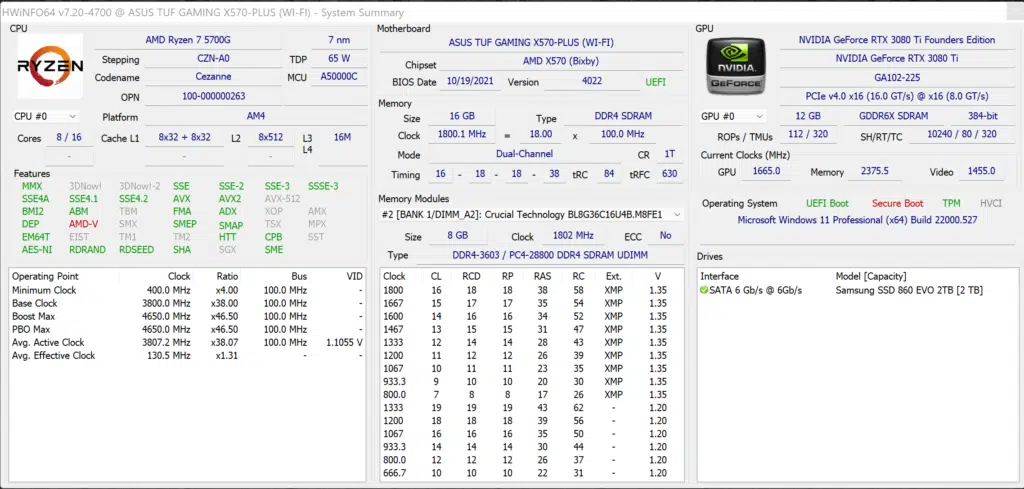
CPUz and HWiNFO64 show all the right information, and we are running at DDR4-3600 by default with D.O.C.P. enabled.




